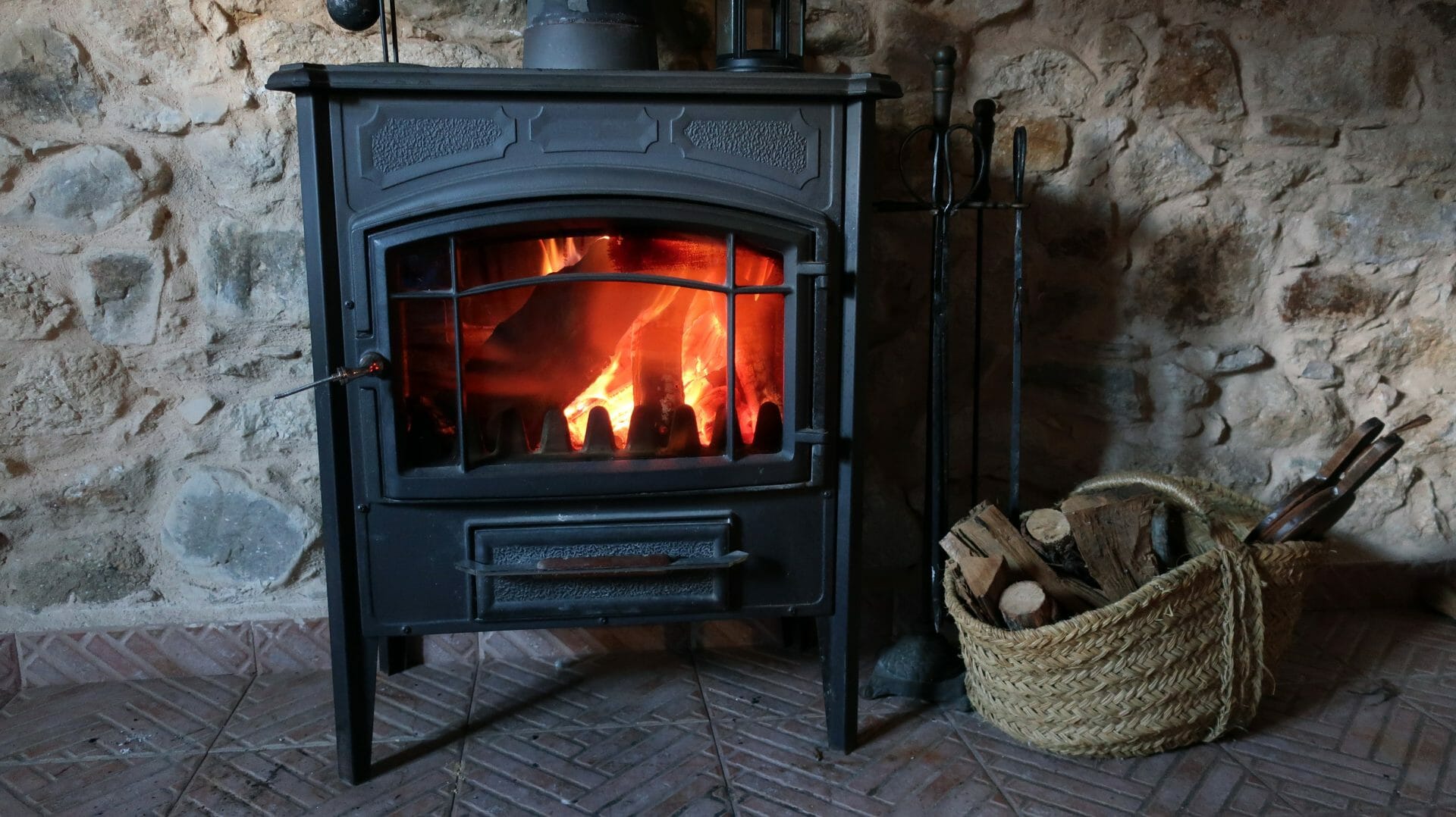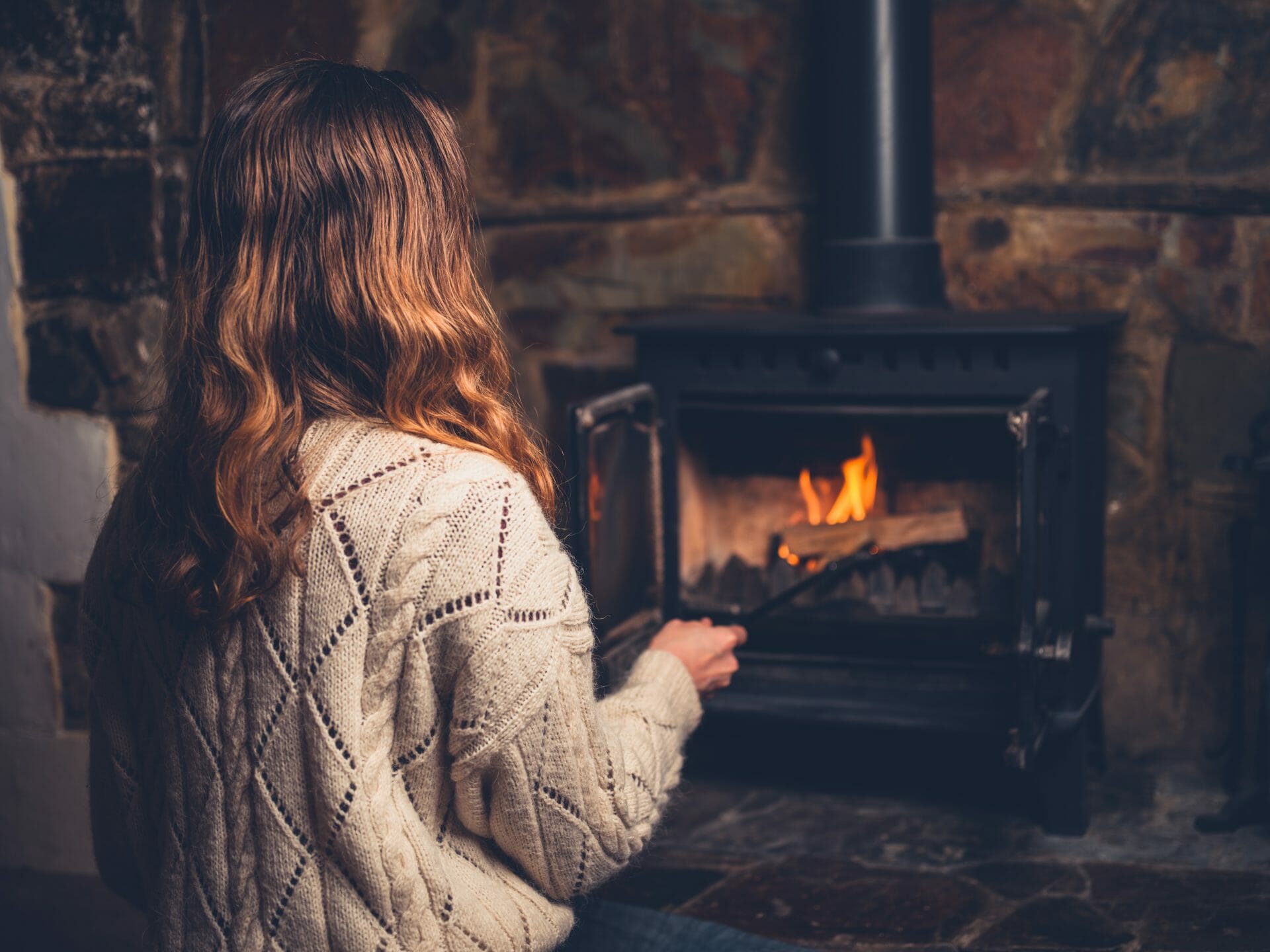- Creosote has a strong smoky smell that can be likened to tar and the human nose can easily detect it even in small amounts
- Creosote buildup in the chimney can easily overwhelm your home with its distinctive smell
- Creosote results from limited oxygen to the chimneys and wet wood
- Creosote is very flammable
- The third stage of creosote accumulation requires an expert opinion on the steps
Nothing can match a fire burning up in your chimney to warm up a chilly day. Thus, ensuring your chimneys’ safety and proper working requires frequent maintenance, which helps prevent creosote buildup.
Contents
- What is Creosote, and how does it smell?
- What causes chimney creosote?
- 1. Slow-burning of wood due to limited access to oxygen
- 2. Incomplete combustion of wood
- 3. Use of wet wood
- How to identify a creosote buildup
- 1. Flaky buildup
- 2. Tar-like buildup
- 3. Third-degree buildup
- Dangers of creosote buildup
- How to get rid of creosote
- How to clean up Creosote
- Step 1
- Step 2
- Step 3
- Step 4
- Step 5
- Step 6
- How to minimize creosote buildup
- In Summary
What is Creosote, and how does it smell?
Creosote is a dark brown oil containing several phenols and other organic compounds. It’s distilled from coal tar and used as a wood preservative. This Creosote has a strong smoky smell like a freshly-paved driveway made of asphalt.
Most people liken the smell of this substance to that of Tar. Its strong scent means that anyone can easily pick its smell with the human nose even in its lowest concentrations; thus, when it accumulates into large concentrations, you can smell it throughout the whole house or home.
What causes chimney creosote?
There are a few things that can lead to a creosote buildup. Some of those may include:
1. Slow-burning of wood due to limited access to oxygen
When the wood used doesn’t burn fast enough, the smoke produced takes longer to escape through the chimney; hence, the smoke accumulates this substance.
In most cases, this is because your chimney isn’t hot enough; therefore advisable that you should ensure that your chimney is heated up to 250 degrees Fahrenheit.
2. Incomplete combustion of wood
It usually happens when the amount of oxygen to the chimney is limited, which leads to a slow rise in the smoke produced, thus making a perfect environment for the accumulation of Creosote.
3. Use of wet wood
Since wet wood doesn’t heat up as much as dry wood, it may accumulate this substance. It is important to note that unseasoned wood contains more moisture than seasoned wood; therefore, the unseasoned wood keeps the chimney from getting as hot as expected.
Link: https://www.highschimney.com/minimize-creosote
How to identify a creosote buildup

Typically there are three stages of creosote buildup, which includes:
1. Flaky buildup
It is the first stage of a creosote buildup, and it’s normally a thin layer of flakes which is seen when you first use your fireplace or woodstove. At this level, the deposits are not dangerous, but they can lead to problems after some time.
2. Tar-like buildup
In most case scenarios at this stage, the creosote buildup begins to appear more like Tar, but in some cases, though rare, it may still look like flakes. Creosote buildup.
3. Third-degree buildup
This third degree buildup is thick and resembles a black glossy candle wax or Tar and normally occurs after a chimney-fire outbreak.
If it’s due to accumulation, the repercussions are worse since it restricts air movements within the chimney and smaller the chimney column.
N/B. It’s key to note that all three stages can be quite dangerous since they are equally flammable.
Dangers of creosote buildup

1. Creosote is a highly flammable substance, especially whenever it accumulates in large amounts.
It’s likely to ignite when exposed to enough heat from your fireplace, and it’s key to note that the Creosote-fueled fires spread quickly and with a minimal warning, making them highly dangerous.
Statistics have shown over 25000 chimney fires caused by Creosote per year in the US, leading to approximately 125 million dollars in property damage.
2. A blocked furnace flue prevents the escape of combustion gases; thus, those gases are released into your home. Once inside, those gases recirculate and mix with the clean air making carbon monoxide part of the air breathed. The carbon monoxide will deprive the heart and other vital organs of oxygen, thus leading to suffocation.
How to get rid of creosote

1. You can use a brush or a cleaning log to remove the flaky buildups and prevent further accumulation. After cleaning, you should ensure that you have also swept the floor clean to ensure that the flakes don’t catch fire.
2. The second stage can be removed with some tools, but you should hire a chimney sweep to conduct a close inspection of your chimney to determine its status before helping you get rid of everything.
3. You should contact a professional chimney sweep to help at the third stage, where the Creosote is dark like Tar. However, even if they remove the Creosote at this stage, you will find the chimney liner damaged; thus, you should consider replacing it.
4. understandably, Creosote can begin to reform within a few days of cleaning; thus, chemical cleaning is another recommended method of getting the lid of Creosote.
The chemical cleaners have two functions, reducing the formation of Creosote and also helping reduce the chimney odors.
Link: https://www.priddyclean.com.
How to clean up Creosote

Step 1
Vacuum or dust the fireplace to remove all the loose ashes.
Step 2
Clean the pipe that connects the fireplace to the chimney, referred to as the flue.
Step 3
Scrap the fireplace hearth and the damper with a stiff brush to clean the ash and soot buildup.
Step 4
Make a cleaning solution by mixing a thick detergent, warm water, and ammonia. On the other hand, you can also opt to use trisodium phosphate in place of a detergent.
Step 5
Apply the cleaner to the bricks with a paintbrush. Ensure you get the cleaner into all the crannies and nooks of bricks. After completing, allow the cleaning solution for about 30 minutes to dry.
Step 6
Scrub the bricks with warm water and a scrub brush and ensure you remove all the Creosote, then allow it to dry before lighting another fire.
link: https://www.priddyclean.com
How to minimize creosote buildup

When wood burns slowly, the smoke produced normally will contain the Creosote, accumulating in the cool chimney flue. The best way to minimize this buildup is by:
- Maintaining a brisk fire using dry well-seasoned wood.
- Maintain or heat the chimney temperature to about 250 degrees, thus preventing the condensation of Creosote.
- Opting to use the new and efficient stoves, which delivers more heat into your house rather than the fireplace. It will help reduce heat escaping through the chimney, thus lowering the flue temperature.
- Close weekly inspection and cleaning to ensure Creosote is not building up due to improper operations.
Link: https://www.hunker.com/13419272
In Summary
Creosote is a type of coal tar product that is usually used in preservatives and wood treatments.
It is formed by the burning of wood or coal. It is a slow-to-evaporate substance that has an unpleasant smell.
